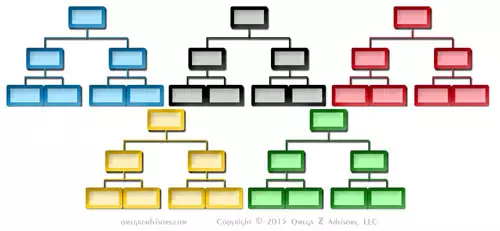Change management consultant Mike Lehr is President of Omega Z Advisors.
 He helps leaders and others to build, merge and change organizational cultures.
He helps leaders and others to build, merge and change organizational cultures.
Organizational culture plays a key role in our businesses.
It is hard to grasp.
It is complex.
It is ambiguous.
It can be overwhelming.
Changing company culture can seem daunting.
When plans go awry though, it is often the culprit.
Learning how to improve company culture then is worth our efforts.
It begins with knowing more about it:
- What is organizational culture?
- Why is organizational culture important?
- What is a strong organizational culture?
- What is involved in building organizational culture?
What is Organizational Culture?
In base terms organizational culture is the personality of the group. Researching this more, we can find many definitions. No one stands out. They all show the many aspects of internal cultures.
This personality shows itself in such things as the values and behaviors of the group. It also shows itself as stated and implied expectations about the group’s purpose and operation.
An organizational culture always exists. Even if we think not, it does. Humans always form cultures when groups persist. We just might not be able to see or to define it.

Organizational culture is the collective personality of the group. It colors what initially seems to be similar organizations because of their structure.
Why is Organizational Culture Important?
Organizational culture is important. It hugely impacts the group’s success. It is the blood that flows through the group. It delivers the energy, compliance or inspiration. Tasks that fit the culture will go well. Those that do not will not.
If goals and tasks do not fit the organizational culture, then one of two things must change. The goals and tasks must change, or the culture must change. The latter takes longer.
Organizational culture is fluid. It is the road to success. It needs inspection. It needs maintenance.
Sometimes it needs an overhaul. Other times we need it to go someplace else. If the road falls into disrepair, we go slower. Our trip is not as good. It takes more gas, more effort.
What are the Signs of a Strong Organizational Culture?
A strong organizational culture allows a group to work more efficiently and effectively than one that does not have a strong culture. The group works better. It works faster. It uses less effort.
How this is done will vary. No one organizational culture is the best. Each group works under different factors. Situations are different. Stages of development are too. The people differ. Leaders too.
For example, a group might not need a dominant innovative organizational culture. Its business and markets are mature. Few competitors might exist. Another will. Products, competitors and services are many and diverse.
What is Involved in Building Organizational Culture?
Building organizational culture has one or more of these goals:
- Establishing
- Reinforcing
- Changing
- Merging
Establishing Organizational Culture
Groups over a year old with five or more people already have an internal culture. In a sense, there is no such thing as establishing a culture. This applies mainly to start-ups, small groups and newly formed, independent divisions of large groups.
In organizations under forty employees, the default organizational culture profile will be that of the leader’s personality. In larger groups, it will reflect the leadership team’s personality or team culture. This is not always true. It is a good start point though.
The biggest mistake people make in building organizational cultures is assuming hiring the right people will do it. That can help, but it is no match for the collective pressure of the group. The “right people” will either conform, leave or be fired.
Reinforcing Organizational Culture
Many times the best first step is just identifying and defining what the culture is. That is because few groups invest time in doing this. Even if the culture is good the way it is, this helps. Reinforcing a culture cannot take place if the group does not know what it is it is reinforcing.
Again, organizational culture is a road to success. It will erode if it is not reinforced. Too many external and internal forces act on it for it to remain unchanged. One is force is change. Today’s culture might not be good for tomorrow’s group.
Changing Organizational Culture
Changing organizational culture combines two tough tasks, building organizational culture and change. It is not complex though. The steps are clear. It often fails though.
Looking at the reasons for failing, most are because of unrealistic expectations. Inadequate preparation closely follows. Soft commitment follows these two.
Changing culture in the workplace is a test of leadership. It begins and remains at the top. While this might not mean a change in attitude, it will mean a change in behaviors. A key one is follow up. They will need to do more until there is momentum.
Merging Organizational Cultures
Merging groups is the toughest organizational culture change to go through. Tension will always be there, no matter how friendly. The most mundane non-business issues can be the lighting rod of tensions.
For example, support for rival sports’ teams can be such a rod. This will not be the reason though. It will act as an outlet for all the negative emotions around the merge. This is no different than events at home triggering the release of negative emotions from work.
The merge of cultures needs extra thought. It needs extra time. It is a clash of titans.
Organizational culture drives success. It does so more than any vision, strategy or process. That is based on relationships. Those relationships either impose compliance . . . or create inspiration.
For more on building the organizational culture you want, please request our building organizational culture planning checklist. This great tool helps anyone to have the right expectations, preparation and commitment to building a strong, dynamic business culture.


